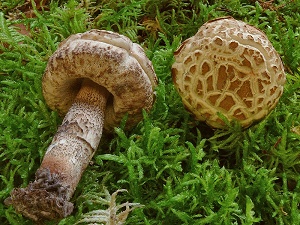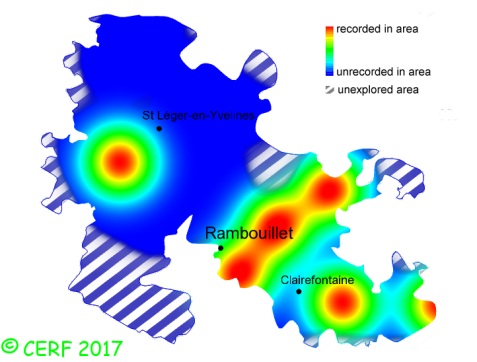| Leccinum duriusculum (Schulzer ex Kalchbr.) Singer |
|
|
|
|
|
|
The cap is buff to dark grey-brown, paler towards the centre (gets paler when drying), fleshy, very hard, hemispherical at first then convex to flattened. The cap surface is downy-rough then smooth, slightly slimy in damp weather, matt once dry. The cap margin is slightly overhanging the tubes. The stem is full, sturdy and deeply buried, with a rough surface because of the small longitudinally arranged scales. It is more or less equal, swollen or spindle-shaped. According to some authors, a very specific network, with raised and elongated cells, is present at the top of the stem. The stem's background colour is white, the scales covering it being grey to black.. The flesh is white, turning pink when cut and exposed to air, then becoming purple grey (without blackening) when in contact with air; The stem base however becomes green-blue then brown; its taste is faint or mild; the odour is weak to pleasant; The tubes are free, thin, long (15-25mm). They are whitish then pale yellow. The pores are small, round, white then grey, turning brown slightly but not blue when pressed. The spore print is tobacco brown. It grows along river banks, essentially with aspen. The fruiting period takes place from May to December.
Chemical tests : no reaction to iodine or ammonia. The flesh becomes pale green when in contact with iron sulphate. Distinctive features : brown cap, with always firm flesh; with poplar (mainly aspen); firm and white stem, covered with grey to black scales; white pores, turning eventually yellow; flesh becoming pinkish when exposed to air, without turning black, and turning green in stem base Leccinum duriusculum is quite rare and localised in the forest of Rambouillet, and is infrequent, more generally speaking . | ||
|
page updated on 14/01/18

